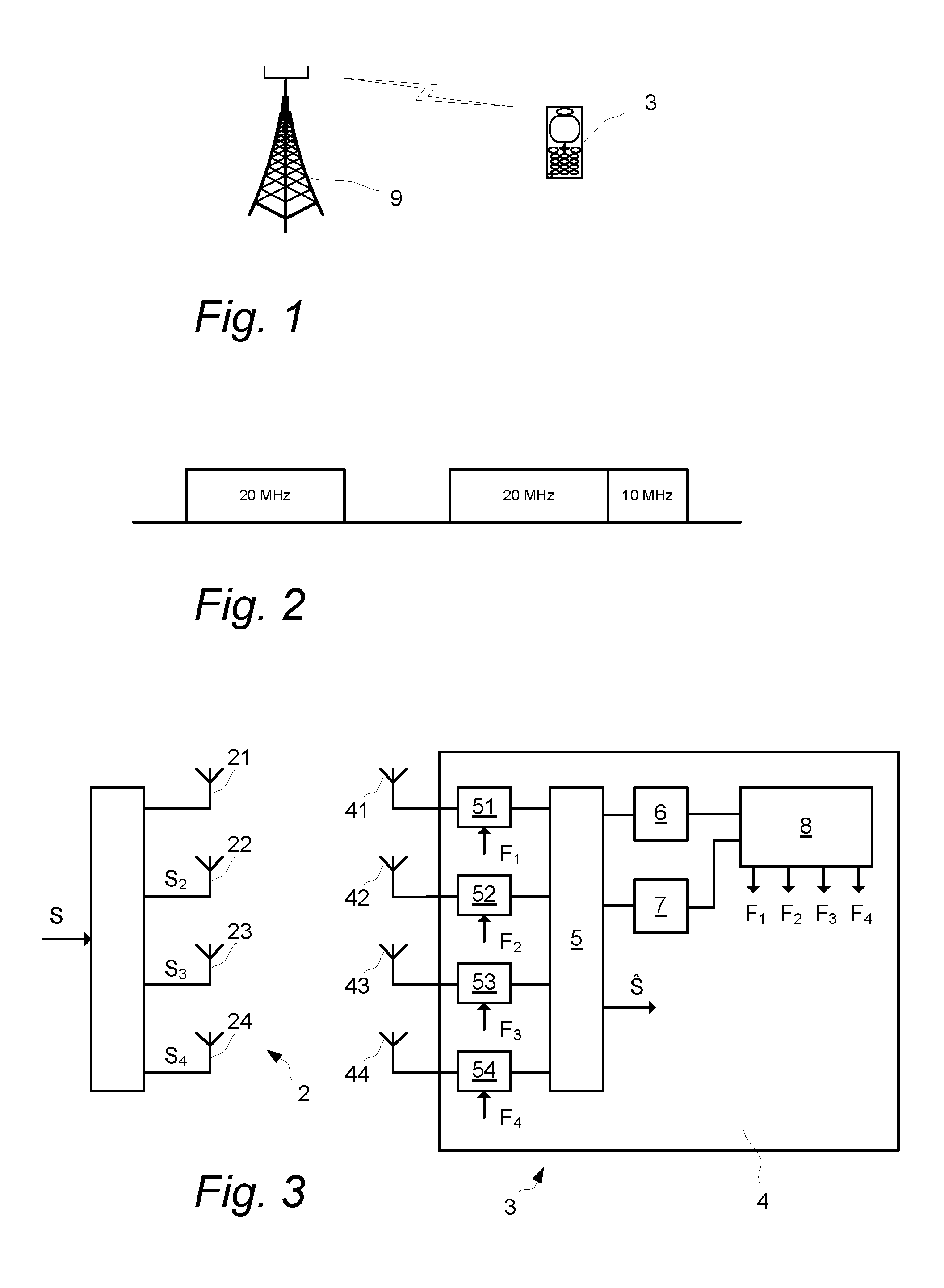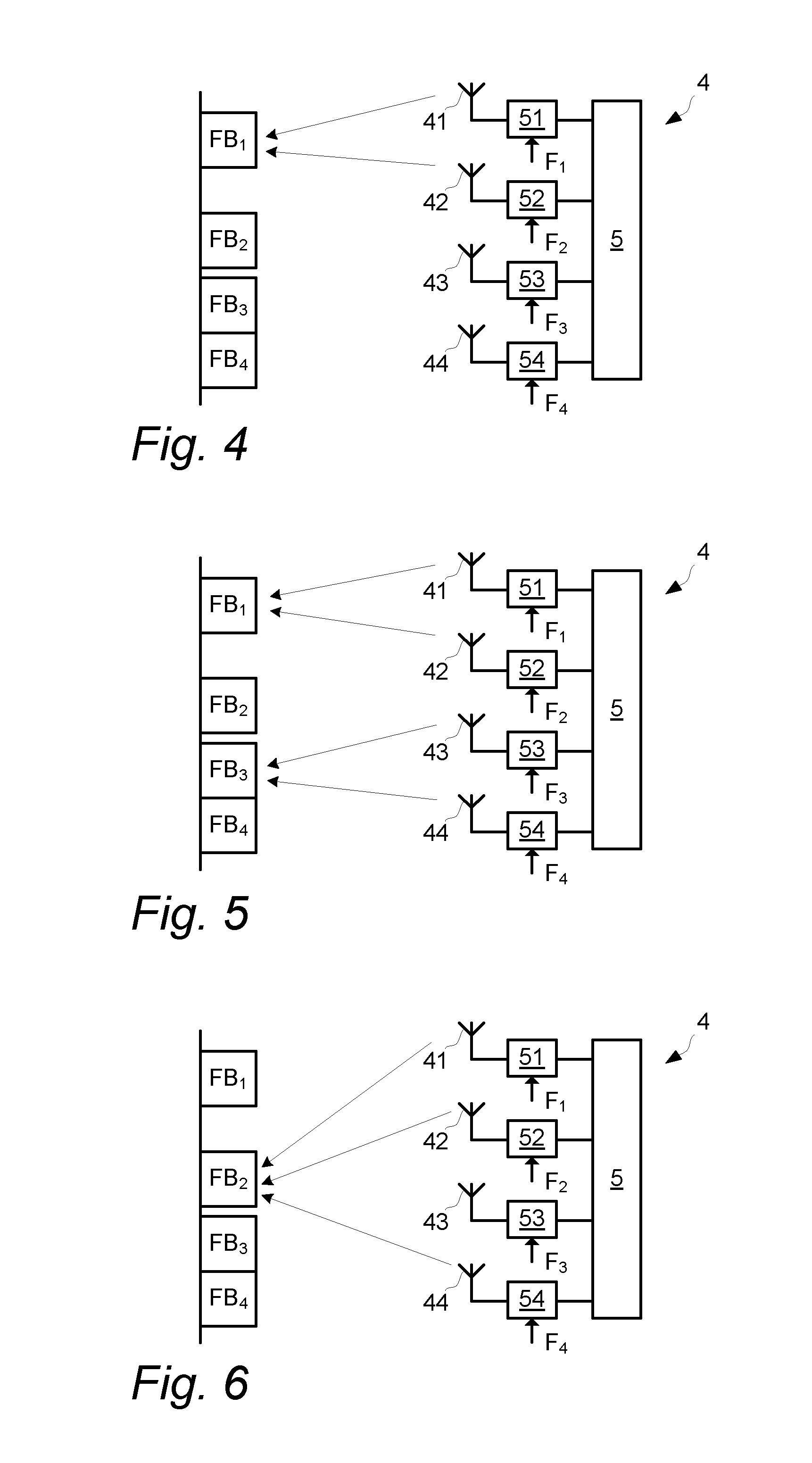Method and Receiver for Estimating and Reporting a Channel Quality Measure
a wireless communication channel and quality measure technology, applied in the field of wireless communication channel quality measurement estimation and reporting, can solve the problems of unproportionally large degradation in coverage of high data rates within a limited bandwidth, high bandwidth utilization without corresponding reduction in power efficiency, and complex communication systems employed, so as to improve signal-to-noise/interference ratio, improve the effect of diversity and low fading correlation
- Summary
- Abstract
- Description
- Claims
- Application Information
AI Technical Summary
Benefits of technology
Problems solved by technology
Method used
Image
Examples
Embodiment Construction
[0038]With reference to FIG. 1, a base station 9 and a user equipment 3 in the form of a cell phone are illustrated. Instead of a cell phone, the user equipment may be a PDA, a laptop, a modem, a TV or any other electronic equipment fitted with means for wireless communication via a wireless communication channel established between the user equipment 3 and the base station 9. The base station 9 is in turn connected to a conventional communication network (not shown).
[0039]Both the base station 9 and the user equipment 3 comprise means for spatial multiplexing, and more specifically MIMO antenna processing, and are each configured to fulfill the requirements of the 3G Long Term Evolution (3G LTE) proposal for a new mobile cellular. Multi-band transmission will be a principal part of the further releases of 3G Long term evolution (LTE) targeting ITU IMT-Advanced capabilities.
[0040]This means that contiguous and non-contiguous spectrums of frequency bandwidths (component bands) are us...
PUM
 Login to View More
Login to View More Abstract
Description
Claims
Application Information
 Login to View More
Login to View More - R&D
- Intellectual Property
- Life Sciences
- Materials
- Tech Scout
- Unparalleled Data Quality
- Higher Quality Content
- 60% Fewer Hallucinations
Browse by: Latest US Patents, China's latest patents, Technical Efficacy Thesaurus, Application Domain, Technology Topic, Popular Technical Reports.
© 2025 PatSnap. All rights reserved.Legal|Privacy policy|Modern Slavery Act Transparency Statement|Sitemap|About US| Contact US: help@patsnap.com



